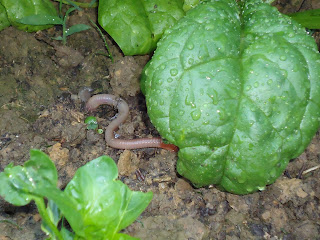I've been feeling very...well...growish lately. Like nothing I touch will die or wilt. I've been riding high on the compost success in my garden.
I saw some wild stems growing off my lone blackberry bush, and I thought, dang, I have a super-growish idea: I'm going to clip these and root them (is that the right word?) to create a whole ROW of blackberry bushes.
WHOOSH! Did you hear the wind go out of my sails? I barely had time to move the pots next to each other before they had wilted, and it only took two more days before they were reduced to brown twigs.
Fast forward a few Googles, and I found The Helpful Gardener Forum. A member there let me know that blackberry stems would grow until they were top heavy, and then they could be buried into the dirt to grow roots. Eventually, I could clip the stem in the middle, leaving one part attached to the main plant and the other newly rooted into the ground.
The next time I feel a gardening decision coming on, I'm visiting a few helpful gardeners first!













